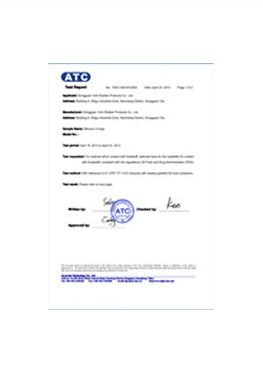डिस . 04, 2024 09:47 Back to list
replacing seals on a hydraulic cylinder
Replacing Seals on a Hydraulic Cylinder A Comprehensive Guide
Hydraulic cylinders are vital components in various machinery, ranging from construction equipment to manufacturing tools. They provide the force necessary to perform heavy lifting and movement tasks. Over time and with continuous use, the seals on hydraulic cylinders can wear down or become damaged, leading to leaks and reduced efficiency. Replacing these seals is essential for maintaining performance and prolonging the life of the cylinder. This article provides a comprehensive guide to replacing seals on a hydraulic cylinder, covering the necessary tools, steps involved, and tips for successful replacement.
Understanding Hydraulic Cylinder Seals
Hydraulic cylinders typically contain several types of seals, including rod seals, piston seals, and wiper seals. Rod seals are primarily responsible for preventing hydraulic fluid from leaking out of the cylinder, while piston seals ensure that the fluid is effectively contained within the cylinder during operation. Wiper seals protect the internal components from dirt and debris, thus preserving the functionality of the cylinder. When these seals wear out, it can lead to decreased performance, increased oil consumption, and potential failure of the hydraulic system.
Tools and Materials Required
Before commencing the seal replacement process, it's essential to gather the necessary tools and materials
1. Tools - Wrenches and sockets - Screwdrivers (flat-head and Phillips) - Pliers - Seal puller or prying tool - Torque wrench - Cleaning cloths - Safety goggles and gloves
2. Materials - Replacement seal kit (compatible with your hydraulic cylinder) - Hydraulic oil - Gasket maker or sealant (if required) - Clean rags
Step-by-Step Guide to Replacing Seals
1. Preparation - Safety first depressurize the hydraulic system by shutting off the power and releasing any stored pressure. Wear safety goggles and gloves to protect yourself from hydraulic fluid. - Remove the hydraulic cylinder from the machine if necessary. This may involve detaching hoses and bolts. Always note the configuration for reassembly.
replacing seals on a hydraulic cylinder

2. Disassemble the Cylinder - Carefully remove the end cap of the cylinder using wrenches or sockets. Be gentle to avoid damaging any threads or components. - Slide the rod out of the cylinder barrel slowly, taking care not to scratch or damage the surface.
3. Remove Old Seals - Use a seal puller or a suitable prying tool to extract the old seals from their grooves. Take care not to damage the seal groove during this process. - Clean the areas around the seals thoroughly using a lint-free cloth to remove any dirt, debris, or old sealant.
4. Install the New Seals - Before installing the new seals, verify that they are the correct type and size as specified in your seal kit. - Lubricate the new seals lightly with hydraulic oil to facilitate installation and prevent damage. - Carefully place the new seals into their respective grooves, ensuring they are seated evenly and securely.
5. Reassemble the Cylinder - Replace the cylinder rod back into the barrel, ensuring that it moves smoothly. Align it properly before securing the end cap back on. - Tighten the end cap with the appropriate torque using a torque wrench.
6. Reinstall the Hydraulic Cylinder - If you removed the cylinder from the machine, reinstall it by reversing the disassembly process. Reattach hoses and bolts as needed, ensuring all connections are secure.
7. Test the System - Before full operation, conduct a pressure test to ensure that there are no leaks. Monitor the cylinder for any signs of hydraulic fluid seepage. If any leaks are found, the assembly may need to be disassembled again to check the seals.
Tips for a Successful Seal Replacement
- Always refer to the manufacturer’s manual for specific instructions related to your hydraulic cylinder model. - Use only high-quality seals from reputable suppliers to ensure compatibility and durability. - Regularly maintain your hydraulic system to prevent premature seal wear, including routine inspections and fluid changes.
Conclusion
Replacing seals on a hydraulic cylinder is a straightforward process that can be performed with the right tools and procedures. By proactively maintaining your hydraulic equipment, you can ensure its efficiency and longevity, reducing the likelihood of costly repairs or downtime. Remember to always prioritize safety during the replacement process, and consult a professional technician if you encounter any difficulties.
-
Unlocking the Potential of Hydraulic Systems with Essential Sealing Solutions
NewsAug.06,2025
-
Unleash the Power of Your Hydraulic Systems with Our Premium Seal Kits
NewsAug.06,2025
-
Specialized Hydraulic Seal Kits for Breakers, Pistons, and Presses
NewsAug.06,2025
-
Revitalize Hydraulic Systems with Premium Repair and Seal Kits
NewsAug.06,2025
-
Fortify Your Cylinders with Premium Sealing Solutions
NewsAug.06,2025
-
Elevate Hydraulic System Reliability with Specialized Seal Kits
NewsAug.06,2025
-
TCN Oil Seal Metal Ring Reinforcement for Heavy Machinery
NewsJul.25,2025
Products categories
















